Speaking Up and Speaking Out With Todd Cherches
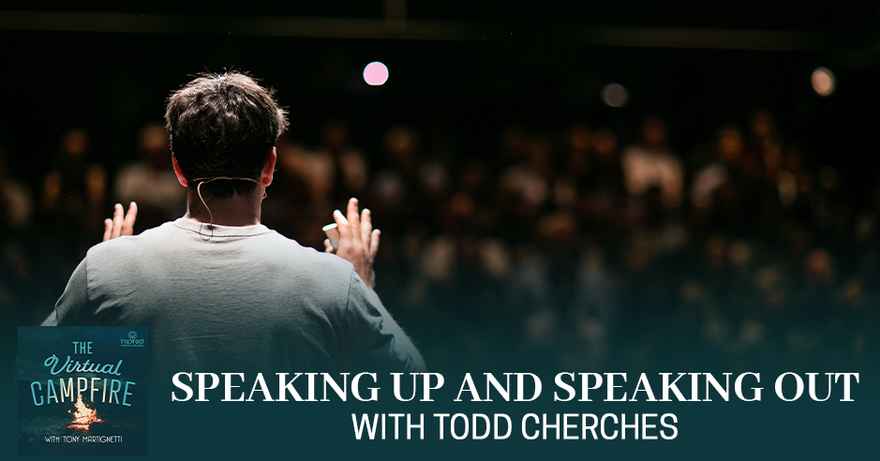
Learning to speak out and communicate your ideas can be the most important lesson you can learn. In this episode, Tony Martignetti chats with public speaker, coach and TEDX speaker Todd Cherches as he talks about speaking out. He talks about his experiences as an extreme introvert and what pushed him to speak up and speak out. He explains what visual leadership is and how it can have an impact on exchanging ideas. He talks about how storytelling can have an impact in technical and financial fields. He also asks us to think about how our stories and metaphors can relate to our audiences.
---
Listen to the podcast here:
Speaking Up and Speaking Out With Todd Cherches
It is my honor to introduce you to my guest, Todd Cherches. He is the CEO and Cofounder of BigBlueGumball. A New York City-based consulting firm, specializing in leadership development, public speaking and executive coaching. He's also a three-time award-winning Adjunct Professor of leadership at NYU, a lecturer on leadership at Columbia University, and a TEDx speaker. He's also the author of VisuaLeadership: Leveraging The Power Of Visual Thinking In Leadership and in Life, published by Post Hill Press/Simon & Schuster. Todd, I want to welcome you to the show.
It's my pleasure being here. I feel like I should have brought some marshmallows to throw on the fire, but we don't have that. It's hard to speak and eat marshmallows at the same time.
That's exactly why I don't do it. Thank you so much for making the time. I'm looking forward to digging into your story. I know there was something else that I couldn't quite fit into the intro that you wanted to share. Anything else?
One of the things I mentioned to my students that's surprising to a lot of people is that I am an extreme introvert. I always say I'm three Bs, a bookworm, a behind the scenes, and a back-of-the-room kind of guy by nature. For me, to do all the things I'm doing that you mentioned, sometimes I'm like, “That sounds pretty impressive. I wonder who that person is.” It turns out to be me. Not that I don't know how I got to that point but we connect the dots by looking backwards. Looking backwards, I never could have envisioned this going forward but this is where I ended up securing this career path. I teach in the HR Master’s program at NYU. People are always talking to HR about having a career path but it is not a path. A path makes it sound like it's laid out for you stroll in the park. It's not a career path. It's usually for most people a career roller coaster with ups and downs, twists and turns, exhilarating highs and terrifying plummets. That's how I describe my career. When I trace back how I got to where I am, it's interesting to me because I never would have predicted where I ended up.
What you described is how most people feel when they do that reflection back and say, “It wasn't the easy path into my life.”
Storytelling is inbred in us. Stories are motivational. They are human. They make you vulnerable.
My students think this whole thing was laid out like I was on this journey where I'm taking one step after another but I've had many setbacks. I've been laid off more times than I could count. I was fired a couple of times. The things and jobs that I took that I thought I would love, I hated. The jobs that I was hesitant about taking, including the last one before I formed my company, changed my life. It was one of the best jobs I've ever had. You never know.
I’m sure a lot of these insights will be part of what is in your book, which is fantastic. What we do on the show for the people who are reading is we talk about flashpoints. These are the points in your story that have ignited your gifts to the world. As you share these points in your story, I want to make sure you're sharing what you're called to share. Along the way, we'll pause and see what's showing up. With that, Todd, I'm going to turn it over to you and let you roll.
It's always hard to decide where to start off but in my TEDx Talk, The Power of Visual Thinking, I talk about how as a kid, my dream was to work in television. As a Baby Boomer, I was obsessed with television. To be honest, working in television was a fallback. My dream was to be Superman and my backup plan was to be Batman. If I couldn't be either of those, maybe a baseball player. That would have been my third, but the reality sets in at some point.
What's interesting is some of my coaching clients have said after listening to that, “In some ways, you are Superman and Batman or aspects of them but instead of having X-ray vision as Superman does, you have the power of visual thinking. As Batman did, he had his utility belt. You have all these tools, tips and techniques in your leadership coaching toolkit. That made me happy. What do Superman and Batman do? They rescue people. They are superheroes. What we all need to do is recognize our own superpowers. We also have our kryptonite. We all have our Achilles’ heels or the things that we're not good at or we're scared of. It’s recognizing and overcoming that and saying, “It's okay, we all have that.” How could we counter those things? We try to avoid the kryptonite and leverage our superpowers.
As a kid, because I couldn't be Superman and Batman, the next best thing was to work in some way in the TV industry. I set my goal of saying, “What can I do in the TV industry?” As an extreme introvert, it would definitely need to be behind the scenes, back-of-the-room kind of thing. As I looked into it in my early teen years, I saw newer jobs in TV programs development. Not that I didn't know if I wanted to be a writer or a producer but everything I did was leading up towards that. I majored in English Literature in college. Most people also think I have a business background because I teach Management Leadership but in all of college, I didn't take one Business course. I was intimidated by the Business students in the MBA programs that I stuck with English Literature and took every possible Shakespeare class.

My claim to fame in high school was in addition to television, I was also a big reader. I read the complete works of Shakespeare by the time I was eighteen. I had a teacher, Mr. Patterson, who got me hooked on Julius Caesar. I became a Shakespeare junkie. After reading Julius Caesar, I was so inspired that even without it being assigned, I read Macbeth, Hamlet, King Lear and Twelfth Night. I kept going and I read the whole Riverside Shakespeare. I loved that. At first, it was a mystery. The language to me was confusing. I'm like, “I don't even know what this is about.” Once I got into the rhythm and the language, I dove into it. My nickname was Mr. Shakespeare in college.
What I do is I took English courses because I knew I could do well on them but one of my regrets was that I didn't take other courses like Business courses and other courses where I might've only gotten a C or a B if I was lucky but I stuck with the sure thing. The classes I knew or thought that I would get an A in Communications and English. That was an example of priorities. It's like, do you go for the GPA or you go for learning and exposing yourself to new possibilities? I chose the GPA path but looking back now and as I coach my students, when was the last time someone asked you, “What was your GPA? How'd you do on your SAT?” In real life, that doesn't come up that often. When we're younger, we don't know the difference and we make decisions based on what we think is important, as opposed to what we learned, later on, is important. We have a refrigerator magnet that says, “Enjoy the little things because someday you may look back and realize those were the big things.” I love that. I wanted to do a whole book just on leadership lessons from refrigerator magnets because I've seen many of them. It's the little things that matter both in life and in school.
Because I had so many college credits in high school, I was way ahead of the curve. I didn't want to graduate early because I was loving college so much so I kept going. I got a Master's Degree in Communication. My wife always says, “I'm going to come to your class one day and expose you for the fraud that you are.” I'm kidding around. Teaching Communication doesn’t mean it is easy to do in your own personal life. We all know that. My background was English Literature and Communications. My first job out of college was in Ogilvy and I made their advertising. I wanted to work in TV and I thought advertising was a step in that direction, which it was. It was a good experience with a great company but it was as a media buyer. That was a very numbers job and I was the farthest thing from a numbers person. I want to apply to an account exec role or something more creative, so I was calculating ratings, shares and dollars. I did that for one year. I always make my students guess. In 1985, what would you guess my starting salary was at my first job out of college with a Master's Degree?
$40 or $50?
$12,000 was the starting salary in 1985 and the average was $15,000 in those days. How do you live in New York or anywhere on $12,000 a year, which is $1,000 a month before taxes?

You can’t buy water for that amount of money.
It’s interesting all these years later, your reaction was like, “What? Are you kidding, it's $12,000 a year?” That was considered a decent entry-level starting salary in those days. With overtime, I got it up to $15,000 but I was commuting two hours each way from my parents' house. I said, “I can't do this for the rest of my life.” I was stuck. I wanted to do something creative. As an introvert, I wasn't the type to raise my hand or speak up and speak out, so I did my job. I applied for a few internal jobs but they're like, “You're a media guy. What do you know about creativity?” I've been doing this for six months and people label you, “You're this.” That happened a few times in my career where I got labeled as, “You’re just this. What do you know about doing this?”
After a year, you got one week vacation. You earned it after being there for a year. Literally, no vacation for the first year, which is crazy also in this day and age. I went out to visit my college roommate who had moved to LA and I saw that Hollywood sign. I'm like, “I am hooked.” I did the single hardest thing I have ever done in my life at that time because I was not a risk-taking person, leaving my dog and my parents in New York, packing up my bags, and my Superman and Batman capes. I packed my cape. I flew out to LA with no money, no contacts. I moved in with my college roommate. We got an apartment together and there I was in Hollywood saying, “Now, what?” What are your thoughts there? I was curious as you're hearing the first phase of my career.
Here you are being Clark Kent up to this point, the person who's hiding behind outside of what you want and cowering behind the real who you are and so many people do. They’re fitting into that box so well but knowing there's so much more in life that you could have.
There I was in LA, no job. I took some part-time jobs, temp jobs, anything I could get to make some money. Speaking of Clark Kent, I got a night job as a bouncer in the nightclub. I'm 6’4 but, stick-figure thin back then. I put on a little weight since then. I was not the bouncer type but you put a suit on someone, give them a clipboard and a velvet rope. All of a sudden, you become the role. As an introvert, it’s out of my comfort zone. That was the irony. There was a club in Burbank that I used to go to all the time and hang out there but I was too shy to talk to anyone or any of the girls. I would just hang out and leave. I applied there for a waiter job and they said, “We don't need a waiter but we need a door host/bouncer.” I'm like, “Alright, I need a job.”
We make decisions based on what we think is important, as opposed to what we learn later on is important.
What's interesting is I took on the persona of that role and I started feeling more confident. I was talking to girls and ended up meeting someone that I dated for three years. I met her by checking her ID at the door. You never know what's going to happen or where things might lead. That was completely out of my comfort zone. My bouncing career ended when I was throwing out some drunk guy one night and he punched me in the face and broke my glasses. I went down and dropped everything I was holding. I'm like, “It's not worth it anymore.” I've had a few incidents but that was the defining or crucible moments with getting punched in the face. Mike Tyson is the one who said, “We all have a plan until we get punched in the face.”
This time it was literally getting punched in the face.
I had a series of jobs. I worked for Michael Nesmith from the Monkees. That was my first job out of college. I was working for him at First Video Production company, then I was an intern for Aaron Spelling. I put scripts together for Dynasty. There I was sitting around and Joan Collins and Linda Evans were walking around. Those were my first brushes with Hollywood. I'm starting to see stars so that was cool. My friend got me a job at Columbia Pictures, television and casting. I’m just doing contracts but I was around it.
Being able to drive onto a studio lot was so thrilling and exciting, to walk in and watch tapings. I got laid off because the writers went on strike. I ended up in the temp pool at Disney where my friend Seth was working. I was temping in eight different jobs over eight different weeks. I temp in legal for one week, in finance for one week, in marketing for one week, and it was amazing to experience it. Now, you're on the Disney lot and I would meet someone for lunch at the corner of Mickey and Goofy because all the streets there on the lot are named after the characters. To see Mickey on your paycheck was cool. It was an amazing learning experience. Even though as an introvert, these experiences pushed me out of my comfort zone and made me a little more comfortable. We expand our comfort zone as we get comfortable with our new surroundings.
Talking about people overlooking hidden talents. I was temping one week in the PR Department and they needed someone to edit the press release. All the PR people were out to lunch or out at a meeting. The head of the PR department was annoyed at me. She’s Yelling at me, “Where is everyone?” I’m like, “I'm answering phones and filing. I don't know where everyone is.” She said, “I need this press release edited, proofread and sent out by 2:00.” I said, “Do you want me to take a shot at it?” She's like, “What do you know? You're just a temp.”
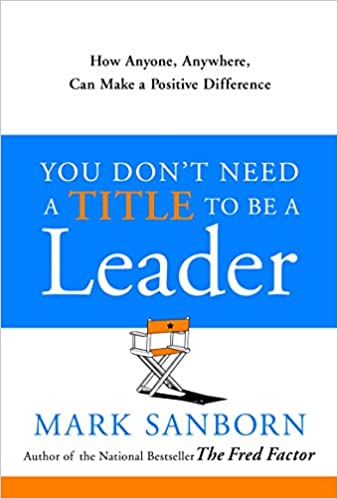 I was Todd, the temp. I was sitting there with nothing to do, so I put it on my typewriter and did a revision. These were the early days of pre-Microsoft Word. When the PR guys got back, I said, “Here's the original. Here's the revision.” I didn't say I did it. The guy looked at it and said, “This is amazing. This is great. Send it out.” Here I was, a hidden talent. She didn't care that I had a Bachelor's in English and a Master's in Communication. I was labeled as the temp. We never know what our hidden talents are. I had no risk, there was no downside to my doing it, but I proved to myself that I was capable of more than what I was doing.
I was Todd, the temp. I was sitting there with nothing to do, so I put it on my typewriter and did a revision. These were the early days of pre-Microsoft Word. When the PR guys got back, I said, “Here's the original. Here's the revision.” I didn't say I did it. The guy looked at it and said, “This is amazing. This is great. Send it out.” Here I was, a hidden talent. She didn't care that I had a Bachelor's in English and a Master's in Communication. I was labeled as the temp. We never know what our hidden talents are. I had no risk, there was no downside to my doing it, but I proved to myself that I was capable of more than what I was doing.
That's a starting point. It's trying to prove to yourself because who do you need to prove to first is yourself before you can get out and start doing it for others. It's building that internal muscle and seeing that you are a superhero.
Having the confidence to raise your hand and say, “Let me take a shot at it. Let me take a stab at this.” One of the things I talk about in my book and one of my mantras is the three V's, visibility, voice and value. Are you seen and how are you seen? Are you heard and how are you heard? Are you perceived as someone who can make a contribution? What I say to people is, “You need to raise your hand.” One of my other mantras is that people are not mind-readers. It's nice when people pluck you out of the crowd or when you get rewarded for your work well done but so often, people get overlooked. If you're not willing to toot your own horn or raise your hand or speak up and speak out, a lot of the time, our organizations and teams miss out and we miss out.
That's what I say to my students. I’m teaching on Zoom because of the pandemic, “If you have your camera and your mic off, how are you going to have visibility, voice and value? We can't see you. We can't hear you. You're not contributing to our conversation and to our learning.” I say that to everyone, “Turn your cameras and mic on, unless there's background noise and share with us.” The success of our class or any workshop is 1/3 on the content, 1/3 on my facilitation, and the other 1/3 are the contributions of the participants in the room. If they're not contributing or if I didn't learn something from you and you didn't learn something from your peers, then you're doing everyone a disservice. That guilt people into feeling, “I'm not holding up my 1/3 of the bargain if I don't contribute.”
It's funny that you're talking about this because I've been delving into this world of quiet leadership. Your story so far has tracked along this path of being the introvert, a quiet one and how little by little, by stepping out of your comfort zone, you have seen the value of doing that. Now when you work with other people, you're creating leadership by stepping out of that comfort zone and seeing that you can be a leader and still be an introvert. You can be a leader from behind and from different places in the room.

As we were talking, many things come to mind. One is Susan Cain's TED Talk and book, Quiet. I'm a huge fan of her. Extroverts get all the credit, while introverts lead quietly from behind. In Good to Great Jim Collins talks about the level-five leader. It's about humility and goodwill. It's not about you. It's about the mission. There are so many things that came to mind as you were talking. Mark Sanborn's book, You Don't Need a Title to Be a Leader: How Anyone, Anywhere Can Make a Positive Difference. We know a million people with lofty titles who are horrible leaders. Examples are all over the place in the pandemic. Grocery clerks, nurses, doctors, ordinary people who came to the aid of others at the time were living with social injustice, the pandemic and the economic crisis. Anyone could be a superhero to someone else. You don't have to save the world. There's a saying that, “If you save one person or make life easier for that one person, then you have saved the world for that person.”
Playing around with the superhero language that you're using is so powerful and the thought that a quiet leader can be sometimes the invisible superhero. The person who's sitting behind and they don't get seen but their power is so magnificent. As soon as they're ready to unleash it, it’s just boom.
You reminded me of the quote from the Chinese philosopher, Laozi from thousands of years ago who said, “When the best leaders work is done, the people say, ‘We did it all by ourselves.’” That’s that invisible and quiet leader who leads from behind. They step up to take accountability when things fail but give other people credit when things succeed and use inclusive language like, “I'm responsible but we did this.” I don't know if you ever saw Derek Sivers’ video, the first follower, where one guy is dancing but he says, “It's the second guy who gets up to dance that starts this movement.” You don't always have to go first. Going second or even third, you're still motivating and leading the people who come after you. I love that idea too.
I'm always a good second in command. I have my own company now but throughout most of my career like my last job, I worked for Jeff Schwartzman. He was a colleague of mine, then he hired me so he was my boss and he became my client. He let me go from that job because of the financial crisis, and now we co-teach together at NYU. He always gave me credit for everything. I would say, “This is my boss.” He was like, “No, Todd is my boss.” He was never about credit. He was always about generosity. We talked about G and G, be genuine and generous, be authentic in who you are. Don’t be like, “I'm the boss now. You don't put on the boss out there. Just because you have that title, doesn't mean it's about pushing people around.
Also, be generous. It doesn't cost anything in most cases to volunteer your time or share an idea. Sometimes we can be overly generous. Adam Grant talks about that in his book, Give and Take. Some people are, “I'll do it for you if you do it for me or you owe me one.” Other people are just takers. You only hear from them when they need something. My philosophy is to put stuff out there and do things for people. If it comes around, great. If it doesn't, that's fine too. Maybe they'll pay it forward to someone else.
To save one person is to save the world because to that person, you just did.
I want to get back into your story because I feel like there's some more ground to cover. Last we were tracking, you were in California. What brought you into the world of coaching and to creating the BigBlueGumball?
Let me give you two other steps in between. I was at Disney doing that temp job. What happened was when the strike ended, I got hired by a writer-producer to develop sitcoms with him. It was an amazing experience. We did that for one year but then his development deal ended, so I was out of work. I ended up getting a job at CBS. My dream was to work for TV networks, so here are all those steps that led me to finally be at a TV network. What's interesting is I was interviewed by this woman. I will not mention her name. I'll call her the devil for shadowing. At the end of the interview, I went home. I said to my roommate, “I don't know if I met my wife or my new boss because this woman is amazing.”
She hired me and a week after I started, my life became a living hell. She turned into this monster that she never was in the interview. She was condescending. Part of the problem was she in over her head, insecure and incompetent. She put me in my place for whatever reason based on her own insecurities. The classic story, it's in my book. The day I'm sitting at my desk, typing a memo and I hear her office door swing open. I feel something whipped by my head and she threw a box of pens at me because they were the wrong ones. She wanted the fine point and these were the medium point.
I tell that story to my students when I'm teaching feedback. I said, “If you were the manager, is there any other way you could think of giving your assistant the feedback that they ordered the wrong pens other than throwing them out their head? I can't think of anything so help me out on this one.” I kept an abuse log because there were many. Almost at least once a day, she did something that was abusive either mentally or physically. Long story short, she fired me one day. I packed up my boxes, went to her boss, the vice president with who I was a friend. I said, “I wanted to say goodbye,” assuming he knew. He was like, “Where are you going? It's just 10:00.” I said, “So-and-so fired me.” He was like, “No, she didn't. Get back to work and get her butt down here.”
After he screamed at her for fifteen minutes, she came down with mascara running down her face. I'm standing there with my box because I didn't know if I was fired or not. All the other assistants were sitting in this open area like, “What is going on?” She storms back and she says, “You're not fired. Get back to work.” She slammed the door. She ended up getting put on notice. She was fired. I got her job temporarily, interim manager of Drama Program Development, talking about drama. It was implied that I would get her job if I prove myself, and out of the blue, they brought in someone else and said, “Here's your new boss. Can you hire him to do this job?”
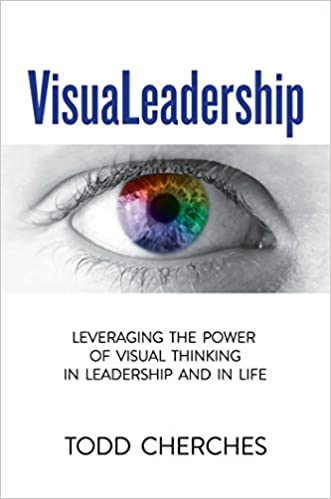 That's when I realized that there was not a future there for me. Part of the reason was I was told I didn't have the confidence. I didn't speak up and out. They didn't think I was assertive and aggressive enough. That's where I thought my quiet leadership and my work itself would earn me that job but I didn't sell myself. I wasn't a good interviewee at that time. Tooting my own horn was out of my comfort zone. When they asked, “Why do you think you should do this job?” I was like, “I didn't know how to answer that.” I've come a long way since then. That was an example of where I was passed over.
That's when I realized that there was not a future there for me. Part of the reason was I was told I didn't have the confidence. I didn't speak up and out. They didn't think I was assertive and aggressive enough. That's where I thought my quiet leadership and my work itself would earn me that job but I didn't sell myself. I wasn't a good interviewee at that time. Tooting my own horn was out of my comfort zone. When they asked, “Why do you think you should do this job?” I was like, “I didn't know how to answer that.” I've come a long way since then. That was an example of where I was passed over.
A friend of mine rescued me. I interviewed for a job as a personal assistant to Pee-wee Herman, which was one of my other claims to fame out there. My friend called me who is friends with the producer of Pee-wee Herman’s movies and he needed a personal assistant. He said, “Is this something you're interested in?” I was desperate to get out of CBS, so I interviewed for it. I got to spend a 1/2-hour one-on-one with Pee-wee Herman. That was one of the other highlights of my Hollywood years. I left television altogether and I took a job as a project manager for a theme park company.
They said I was supposed to be a project coordinator but they needed someone to manage this project and they said, “By the way, you have to go to China to oversee the installation.” I talk about that in my TEDx Talk. I was terrified of flying, first of all, not only was I flying New York to LA as I normally did. They're shipping me across the Pacific Ocean, which I was terrified of. I had never been outside the country before. I didn't even have a passport. I did everything possible trying to get out of it and I finally forced myself to do it, and that transformed my life. That one trip.
I talk about in my TED Talk, the catalyst of my visual thinking which is my specialty now is we were there, me and my two crew members, everyone on that side spoke Chinese. We spoke no Chinese. They spoke no English, even the translator didn't speak English. There’s no other way to communicate. What I did was picked up a pen and paper, and anything we needed to draw, arrows or if we needed a hammer or a screwdriver, I drew it. The light bulb went off, not right at that moment but when I got back. I was debriefing and reflecting that I got a lot done by pointing to non-verbals and drawing an illustration.
My mantra now is, “How do you get people to see what you're saying? How do you get an idea out of your mind's eye in someone else's?” A big part of the way of doing that is visuals. Not only visuals as in pictures, drawing, PowerPoint slides, mental models and frameworks, but visual language, storytelling, metaphor and analogy. The foundation now of all the work that I do in my coaching, training and teaching is using visualization techniques, visual thinking, visual language and tools to get others to see what you're saying.
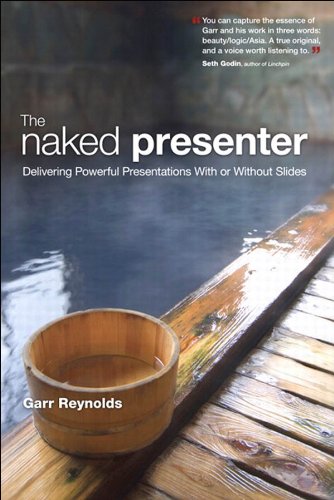 Having read the book, I was completely sold on this idea. It's a gift that you're giving to the person who is receiving your message in many ways. It's like the laurel branch that says, “You may not understand what I'm saying completely. Let me draw it for you. Let me help you understand.”
Having read the book, I was completely sold on this idea. It's a gift that you're giving to the person who is receiving your message in many ways. It's like the laurel branch that says, “You may not understand what I'm saying completely. Let me draw it for you. Let me help you understand.”
People say, “Paint me a picture.”
It also is the best way to simplify things that are very complex. The whole concept is it's almost like it's always been there for us. We just never quite grasp the idea that this is what we need to be doing.
Some of the feedback I've gotten is like, “What you're talking about is not Earth-shaking or groundbreaking because we've done this for years,” but I put a framework around it. People are now thinking about it. My book, which I was very proud of was endorsed by people like Dan Pink, Marshall Goldsmith, Nancy Duarte, and some of the top thought leaders in the leadership and visual thinking world. My symbol is a Venn diagram with visual leadership at the center, with visual thinking or visual communication in one circle, and management leadership in the other. There are a lot of people doing things around design thinking and visuals, graphic recording and things like that. Data visualization is a hot topic, and there are a million books on management and leadership, but not so many people have connected the two.
There's a quote by the Greek philosopher Heraclitus, “A wonderful harmony arises when we joined together the seemingly unconnected.” I love that concept of taking two things. That's one of the things that we did in the TV industry. People will come in and pitch an idea for a show like Miami Vice. The pitch for that was very simple, MTV cops. We’re taking cop shows, combine it with music videos, you put them together and you have Miami Vice. We do that all the time without thinking about it. Reese's Peanut Butter Cups, Smucker's peanut butter and jelly in the same jar. There are all kinds of ways that we combine things in new, fresh ways to help people see them in a new light. That's what visual leadership has done for a lot of people. It’s to see things in a fresh way.
There are all kinds of ways that we combine things in new, fresh ways to help people see it in a new light.
The cover of the book has a rainbow eye and the rainbow represents two things. One, diversity and inclusion. BigBlueGumball is a metaphor that represents the world, the globe or the Earth. The world is like a big blue gumball. However you want to take it, that's up to you but that's what it's about. Originally, I had blue eyes, but I realized that the blue eyes were not inclusive. I don't even have blue eyes. I have hazel eyes. I went with this surreal rainbow eye. No one has an eye like this, just like no two people have the same way of looking at the world. This rainbow eye represents diversity, inclusion, belonging, innovation and creativity. Those are some of the key themes of my book.
I've also been talking a lot about the concept of flipping the eye. The word visual leadership, the meaning behind it is that it's joined together because who you are and how you lead are inseparable from how you view the world. How we view the world is a result of our upbringing, values and our life experiences, both good and bad. That's the lens through which we see the world. As a leader, we always talk about having a leadership vision. We talk about leadership visionary. It's about seeing a future that's different from and better than the current reality. Part one is formulating that vision in your mind's eye. Part two is communicating that vision in a clear and compelling way so that other people can say, “I see what you're saying.” With that, you can implement or execute that vision.
The idea of flipping the eye is twofold. One, it's looking internally at yourself and self-reflecting. Turn the eye on yourself and look inward and say, “Why do I believe? What do I believe in? Is it true? Is it valid? Is it distorted?” We all have biases and assumptions, preconceptions. That's one aspect. The other component of flipping the eye is, “Can I see the world through the lens of other people who are different from me?” Especially in this day and age, it's more important than ever. That has resonated with people. Those two ways of using the eye externally looking outward but also being inward-focused.
I liked that concept. It's something that's constantly coming up for me too is thinking about what lens am I seeing this through? It's also not just seeing out, it’s also seeing in which is cool.
I talk about it in four ways. The four categories I’m using are visual imagery and drawing, the second is using mental models and frameworks. The third is using metaphor and analogy. The fourth is using storytelling and extra bonus points for humor. Some people will say, “I love drawing but I don't feel comfortable telling a story.” Other people are like, “I could tell stories all day long but don't hand me a pen and expect me to sketch something out.” One of the things I do is teach people who like to draw how to tell stories and use metaphors, including visual metaphors that they could draw and storytellers. I was once doing a workshop on the art of storytelling for a group of twenty CEOs. One of the CEO said, “I don’t want to be here. I hate storytelling. I'm not good at it. I don't believe in it.” One of the other participants said, “Bob, why do you say that?” This guy starts telling this great story about how bad a storyteller he was.
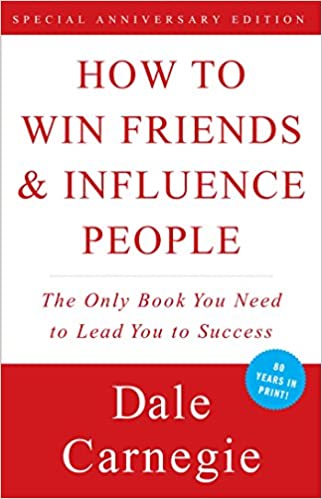 The irony was there for everyone to see. Children and grandparents tell stories. Talking about Virtual Campfire, that's the foundation for sitting around and sharing your story to inspire and motivate other people. Storytelling is embedded in us. Stories are motivational. They are human and make you vulnerable, but they also teach people a lesson. Also, Virtual Campfire is a metaphor. We're not sitting around a little campfire but that's the concept behind this show. That's a living example of how we use metaphors in everyday life.
The irony was there for everyone to see. Children and grandparents tell stories. Talking about Virtual Campfire, that's the foundation for sitting around and sharing your story to inspire and motivate other people. Storytelling is embedded in us. Stories are motivational. They are human and make you vulnerable, but they also teach people a lesson. Also, Virtual Campfire is a metaphor. We're not sitting around a little campfire but that's the concept behind this show. That's a living example of how we use metaphors in everyday life.
One person you mentioned earlier who I wanted to pay a little homage to was Nancy Duarte who I’m a huge fan of hers. A lot of the things that she taught in her books like Illuminate, Resonate and Slide:ology are that gift of how you tell a great story and what's the rhythm of a good story. There’s something about the way that she described it that got me excited about telling good stories. In my former life, I was doing things in finance and strategy. I would always struggle with, “How you tell a good story around numbers?” When I learned a lot of her stuff, I was trying to figure out how to tap into the magic of storytelling, even when you have a story that seemingly would be boring.
She has a book called DataStory. I don't know if you've read that one yet. Garr Reynolds who wrote the book Presentation Zen and The Naked Presenter, and Nancy Duarte who wrote the books you just mentioned. To me, they are the king and queen of visual thinking and visual communication. They are the two people who had the greatest impact on my mindset. Nancy also endorsed my book. I couldn't get Garr Reynolds to do it. I got one out of the two, which was great. As you were talking about, a big area for me is training technical and financial people on how to use storytelling and metaphor to communicate their ideas. One of the things I say is, “Numbers are meaningless outside of the context and the story that they tell.”
My father was an accountant and he taught me Math by teaching me how to calculate baseball batting averages. He knew I loved baseball. If someone was hitting 300, 350 or 220, what does that mean and how do you calculate it? By teaching me percentages and how to do in the IRA, I got hooked on. I still was never good at Math and didn't love it, but that was an example of how that makes something real for someone. One of the chapters of my book is about how my cardiologists almost gave me a heart attack. The story in brief is he walks in after I went through all these tests. Those of us over 50, you have to do the EKG and this and that.
He walked in and put the stuff up on the screen. He said, “Based on your test results, you have a 5% chance of having a heart attack within the next ten years.” All of a sudden, I almost passed out, fainted collapsed on the table. I said, “Does that mean that there's a 95% chance that I won't have a heart attack within the next ten years?” He said, “That's another way of looking at it.” I'm like, “Thank you.” He's looking from a scientific mindset at the numbers, data and statistics but I'm talking about, “Am I going to die within the next ten minutes?” He gave me a scare. We need to think about the story that we want and the meaning behind the number in and of themselves. We need to frame them in a way.

If I tell you that I have a 250 average, is that good or bad? If I'm a bowler, that's great. If I'm a baseball or softball player, that's not so great, 250 means nothing. Steve Jobs is the classic example when he introduced the iPod. If he had said this whole 5 gigabytes, people are like, “Big deal.” If he says this little thing can hold 1,000 songs in your pocket, that's like, “I can hold all my CDs on that little tiny thing?” Do people care about the gigs or the horsepower of your car, or do people picture themselves driving on the open road and what it's going to feel like on the open highway? Unless you're a technology or a car junkie, you don't care about horsepower and RPMs. You need to make it relevant to your audience.
It makes me think about when you're selling to people, the process of engaging with a new customer, a new client and you say, “This is what I'm good at. This is what I do.” Unless you're speaking in the language of what people's pains are and what they care about, who cares?
I always say people have two thought bubbles. This is one of my biggest tips. Whether you're talking about 1 person or 1,000, picture everyone with two thought bubbles floating over their head with WSIC, Why Should I Care? WIFM, What's In It For Me? What you’re saying is if they do not care or don't see a benefit, why are they listening to you? I think about that when I'm talking to my students. For example, a lot of my students are from China and India. I love Seinfeld and I have millions of Seinfeld examples but will that resonate with a 25-year-old female from Beijing who never seen Seinfeld? I love baseball. If I'm talking to someone from India, maybe cricket is a better analogy or metaphor.
We always need to think about the stories we tell and the metaphors, will that resonate with my audience? I once asked the question and none of my students responded. I said, “It’s like Sound of Silence in here, anyone knows Simon and Garfunkel?” They thought Simon and Garfunkel was a law firm or a consulting firm. There was no name recognition there. It dates us in terms of our references. I need to be a little hipper to the scene. A lot of times when you start a story with, “When I was in IBM back in 1968.” That's like people are falling asleep halfway through I, B and M. We need to tell stories that resonate with people that will capture and hold their attention and engage them. Remember that our communication is about them, it’s not about us.
To come to a close on this, I wanted to ask, what's the one book that's had a huge impact on your life? If you have more than one, that's fine too.
Numbers are meaningless outside of the context and the story that they tell.
There are many but if I had to pick one. It's a classic. It was written in 1936. It was Dale Carnegie's How to Win Friends & Influence People. Even though when you read it now, it's great if you love Woodrow Wilson stories. A lot of the stories are outdated but the principles are timeless like principle number six, which is to any person, their name is the sweetest, most important sound in any language. It’s that principle alone, knowing people's names, calling them by their names in the way they want to be pronounced. They got to be done with genuineness, authenticity and sincerity. It's not to manipulate. It is not meant to use it in a “salesy” way. You use the How To Win Friends principles combined with the influencing principles. The subtitle of how to win people to your way of thinking, part of that relates to what I'm talking about. It’s how do you get people to see what you're saying. If you apply his principles even in today’s world, they're going to be as effective as they were when they were first written all those years ago.
If you think about all the things you hear now or things you write about now and the concept you laid out, these are timeless pieces of wisdom. A lot of these ideas we talk about have been refined or told in a different language but they're all the same things. There's nothing new in this world.
A lot of times, it's like how to think like Einstein, Edison, Shakespeare or DaVinci? It's great but all roads lead back to either Peter Drucker or they go back to Confucius or Shakespeare. It is about reframing but there's nothing wrong with repurposing. Putting a new spin on something, finding a new metaphor because times change. One of my sayings is, “In an ever-changing world if we're standing still, we're falling behind.” We may say, “I'm going to ride out this train. This internet thing is just a fad.” You can't necessarily jump on every bandwagon but you need to keep up with the times and keep those skills up. John Watton said, “What you learned after you know everything is what really counts.” I'm a real believer. You can tell by all the books on my bookshelf.
When I had all those horrible bosses, I started reading management business leadership books because I said, “There's got to be a better way to be a manager than through tyranny and abuse.” When I was given my first management job, I had no clue what I was doing. I figured people manage the way they were managed and I was never led. It was literally, “Now I get to tell people what to do and how to do it right.” That's the first thing that comes to our mind and I got to put “Manager” on my business card. Those are the first two things that come. Maybe there's a raise that goes along with it.
I started reading management leadership books. I got so hooked because I love the psychology aspect and communication stuff. When I was working for one company, I was reading anywhere from 3 to 5 a week but on average, one leadership management book a week from 1998 through 2018. I slowed down after I had calculated that at 58th year, over twenty years, I read over a thousand management leadership books. That's when people started saying, “You've read all these books. When are you going to write one?” That's when I stopped reading as many and started focusing on writing my book. It took me about one year of focusing on it full-time, and then it finally came out. I never stopped reading, learning, watch TED Talks. Block out 10 or 20 minutes a day, read a blog post and keep learning.
That's the best endorsement for why I do this and ask these questions. I can resonate with your story because this is exactly how I felt about my journey. There's going to be a better way and just reading and constantly learning, eventually finding out that maybe I need to write something for myself.
Put it out. You're doing a service to the world through your podcast and introducing people. I love the fact that you're not just focusing on, “Tell me about your business, strategy and your revenues.” It's about, “Tell me about tell me about you.” Everyone thinks this whole thing was planned and plotted out. I fell into a lot of things. You know that saying, “Luck is when preparation meets opportunity.” All the reading I did prepare me. When a friend of mine said, “Would you have any interest in teaching at NYU?” I was like, “It never even crossed my mind to be a teacher or a professor. All right.” I went in and met with them. I turned the leadership program I had developed for a client into this fourteen-session leadership program. I'm proud to say that I’ve won a few teaching awards.
For someone who was an introvert and terrified of getting in front of other people, that's one of my strengths too. I have all my students speak within the first five minutes of the class and I say to them, ”You have all spoken more than I spoke in all my years of junior high school, high school, college and graduate school because I never once stood up and spoke in front of a room and you did it. Anything you do after this is gravy.” They're like, ”Is that true?” First, they don't believe me but then I tell them it's true. It’s like, “Now, where are you going to take it from here?”
It gives people so much potential and the possibility that they could get out there.
I say to them, “Any of you could be up here 5 or 10 years from now if you work towards it and if you want to make it happen.”
I got to thank you so much for coming to the show. This is such a powerful time and session to be with you, a superhero in his own right. I also want to give you a chance to tell people where they can find you. Where's the best place to find out more about Todd?
My company is called BigBlueGumball. Go to www.ToddCherches.com. Download the list of my free PDF of my Top 52 Visual Leadership Resources. Get on my newsletter and I'll keep you posted on things related to visual thinking and visual leadership. That's number one. Number two, LinkedIn in with me. I'm happy to be connected. I spend half of my day there. I always liked comments and share people's posts. If you want to check out my book, it's available anywhere books are sold on Amazon or elsewhere. If you like it, leave me a review and I would love to hear what you think.
It's highly recommended. Thank you so much and thank you for readers coming on this journey with us. That's a wrap.
Important Links:
- BigBlueGumball
- VisuaLeadership: Leveraging The Power Of Visual Thinking In Leadership and in Life
- The Power of Visual Thinking – TED Talk
- Macbeth
- Hamlet
- King Lear
- Twelfth Night
- Riverside Shakespeare
- Quiet
- TED Talk – The Power Of Introverts
- Good to Great
- You Don't Need a Title to Be a Leader: How Anyone, Anywhere, Can Make a Positive Difference
- Derek Sivers
- Give and Take
- Illuminate
- Resonate
- Slide:ology
- DataStory
- Presentation Zen
- The Naked Presenter
- How to Win Friends & Influence People.
- www.ToddCherches.com
- LinkedIn – Todd Cherches
- Amazon – VisuaLeadership: Leveraging the Power of Visual Thinking in Leadership and in Life
About Todd Cherches
Consultant, trainer, executive coach, TEDx speaker, keynote speaker, panelist, professor, author, blogger, and thought leader in the field of leadership and visual thinking
Love the show? Subscribe, rate, review, and share! https://www.inspiredpurposecoach.com/virtualcampfire
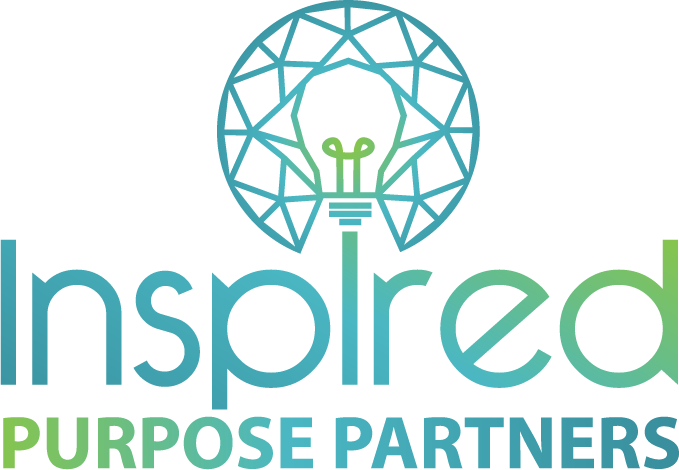

0 comments
Leave a comment
Please log in or register to post a comment